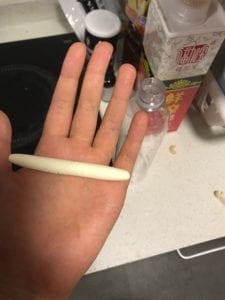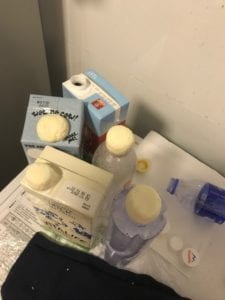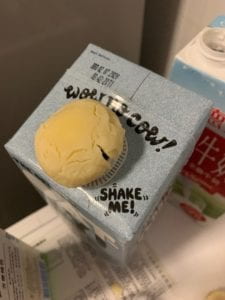Hypothesis: Would milk plastic bottle caps be able to act as a more sustainable alternative?
Once again, using the original procedure, I heated milk, added vinegar, squeezed out the liquid and moulded the milk plastic onto a plastic bottle. From learning from the last experiment, moulding was much easier as I knew what to expect and how to mould to a water bottle. I found that by splitting a piece of dough into 2: moulding one part as a long piece and the other piece as a flat circle was the easiest way to mould the milk casein onto the water bottle mould.








As this is my final experiment before the presentation, I decided to make 4 bottle caps to see which would turn out the best.
Results:
After waiting 2 full days, I removed the bottle caps from the mould. Interestingly, my initial thought of waiting longer before removing it from the mould may not be right after all as I found more cracking than my previous experiment. Hence, there is space for further experiment and research on when is the right time to remove the casein from the mould.




Furthermore, this experiment also emphasised how important the thickness of the casein is when placed on the mould. Whilst drying the casein does shrink up so one of the bottles which had a thinner layer of casein, completely cracked.

Leave a Reply